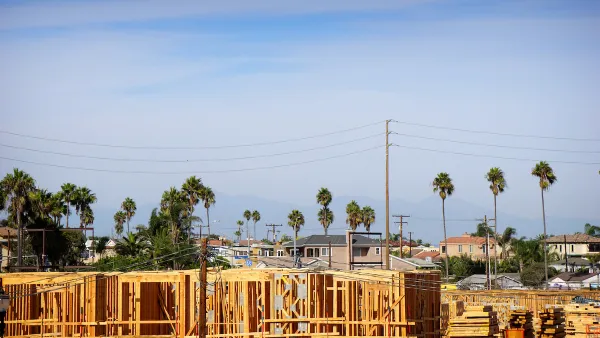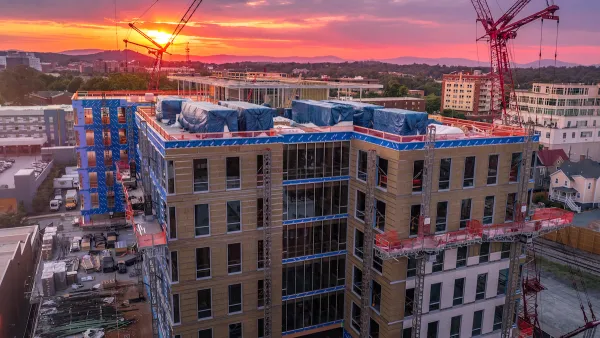A new approach to affordable housing attempts to overcome the traditional approaches of supply-side economics and government-funded investments and extractions.

Joe Cortright writes on the subject of a "third way" to build affordable housing—in addition to the traditional approaches of supply-side economics and public investment in affordable housing through subsidies and inclusionary zoning.
While acknowledging the importance of both methods of adding and preserving affordable housing, Cortright is amplifying news of a third way that doesn't conform to either of those approaches while acknowledging their shortcomings.
[Washington, D.C. developer Rob] Stewart and his firm are working with the Federal City Council in Washington DC on a proposal they call the Washington Housing Initiative (WHI), which aims to create more affordable housing units, more quickly, in neighborhoods that are on the cusp of change. The essential idea is to use a combination of private investment and public funds to acquire existing housing, and maintain its availability for low and moderate income households. Buying existing housing units is dramatically less expensive that building new units, and can be done much more quickly.
And more:
WHI aims to have a lower cost of capital and lower operating cost that traditional affordable housing approaches. A key economy comes from taking a “fund” approach rather than a “project” approach to structuring financing. In most affordable housing projects, funding is arranged on a project-by-project basis, with each project consisting of a different set of actors, and funding sources, and with the added complexity of construction financing and site-specific risk. The WHI would be structured as a pooled fund, with financing not tied to individual projects, but spread across many projects. Because the fund is buying existing buildings, construction lending isn’t needed and other risk factors (approval or construction delays) are minimized. A fund, especially one led by private management, could be quick and nimble, and minimize overhead costs of acquiring properties.
There's a white paper that shares detail insights into the development as a potential model for projects in other locations.
FULL STORY: A third-way for approaching affordable housing

Analysis: Cybertruck Fatality Rate Far Exceeds That of Ford Pinto
The Tesla Cybertruck was recalled seven times last year.

National Parks Layoffs Will Cause Communities to Lose Billions
Thousands of essential park workers were laid off this week, just before the busy spring break season.

Retro-silient?: America’s First “Eco-burb,” The Woodlands Turns 50
A master-planned community north of Houston offers lessons on green infrastructure and resilient design, but falls short of its founder’s lofty affordability and walkability goals.

Test News Post 1
This is a summary

Analysis: Cybertruck Fatality Rate Far Exceeds That of Ford Pinto
The Tesla Cybertruck was recalled seven times last year.

Test News Headline 46
Test for the image on the front page.
Urban Design for Planners 1: Software Tools
This six-course series explores essential urban design concepts using open source software and equips planners with the tools they need to participate fully in the urban design process.
Planning for Universal Design
Learn the tools for implementing Universal Design in planning regulations.
EMC Planning Group, Inc.
Planetizen
Planetizen
Mpact (formerly Rail~Volution)
Great Falls Development Authority, Inc.
HUDs Office of Policy Development and Research
NYU Wagner Graduate School of Public Service




























